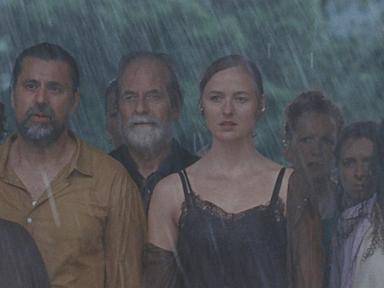A Fungus That Turns Spiders Into Zombies Is a Discovery to Haunt Your Nightmares
Read more at The New York Times
-

Multitasking is not the answer to your feelings of ‘overwhelm’
Research shows the human brain can’t cope with doing too much at once, so don’t take that meeting while you dog walkFinancial Times - 11h -

Lethal fantasies of driving people from their land haunt the Middle East. Trump is fuelling them | Jonathan Freedland
Rarely has a US president proposed an idea more repugnant than this Gaza plan, with its appeal to old enmities. The shock and awe continues and it only gets more shocking and more awful. These past ...The Guardian - 12h -
Is Your Partner Your Best Friend?
Expecting a spouse to be both friend and lover is a relatively new concept. Some think it’s asking too much.The New York Times - 13h -
With a new David Hockney show in Palm Springs, we visit the artist's L.A. haunts
Artist David Hockney used to cruise Los Angeles in his Mercedes. From the Chateau Marmont to Gemini G.E.L., we recreate his journey.Los Angeles Times - 18h -
Denise Huskins, Aaron Quinn use their "American Nightmare" trauma to retrain law enforcement
Critics blame antiquated interrogation training for their "American Nightmare." Aaron and Denise (Huskins) Quinn take us through Aaron's own interrogation, revealing traditional interrogation ...CBS News - 1d -

Movie Review: A deftly choreographed nightmare unspools in Norwegian film 'Armand'
A mother is called to her child’s school for an urgent meeting with his teachers in the Norwegian film “Armand," which opens in theaters FridayABC News - 2d
More from The New York Times
-
What Lurks in This Flower’s Bizarrely Large Y Chromosome?
Scientists published a full genetic sequence of the genes that make some white campions male, and hope their work could unlock how the flower got that way.The New York Times - 1d -
Plesiosaur Fossils Preserve Both Skin and Scales on Ancient Sea Monster
The mix of features offers new clues to how plesiosaurs navigated prehistoric oceans.The New York Times - 1d -
Ancient DNA Points to Origins of Indo-European Language
A new study claims to have identified the first speakers of Indo-European language, which gave rise to English, Sanskrit and hundreds of others.The New York Times - 2d -
The Physics That Keeps a Crowd From Becoming a Stampede
A group of scientists studying the San Fermín festival in Pamplona, Spain, believe there’s a way to predict the motions of a large crowd.The New York Times - 2d -
The Search for the Original Silly Goose in the Fossil Record
Some paleontologists think that fossils recovered from Antarctica are evidence of birds similar to modern geese and ducks that lived alongside the dinosaurs.The New York Times - 2d
More in Science
-
What Lurks in This Flower’s Bizarrely Large Y Chromosome?
Scientists published a full genetic sequence of the genes that make some white campions male, and hope their work could unlock how the flower got that way.The New York Times - 1d -
Plesiosaur Fossils Preserve Both Skin and Scales on Ancient Sea Monster
The mix of features offers new clues to how plesiosaurs navigated prehistoric oceans.The New York Times - 1d -
The Search for the Original Silly Goose in the Fossil Record
Some paleontologists think that fossils recovered from Antarctica are evidence of birds similar to modern geese and ducks that lived alongside the dinosaurs.The New York Times - 2d -
Ancient DNA Points to Origins of Indo-European Language
A new study claims to have identified the first speakers of Indo-European language, which gave rise to English, Sanskrit and hundreds of others.The New York Times - 2d -
The Physics That Keeps a Crowd From Becoming a Stampede
A group of scientists studying the San Fermín festival in Pamplona, Spain, believe there’s a way to predict the motions of a large crowd.The New York Times - 2d